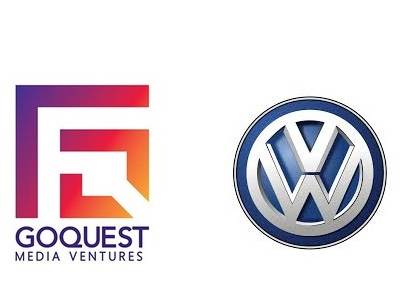Growth of native video content has precipitated a huge demand for transcribed videos
Authored Article by Mr. Darshan Bhatt, Director, GoQuest Digital Studios.
2018 ended on a high note for digital content, with Netflix’s tech-dystopia series, Black Mirror, introducing ‘Bandersnatch’ a unique interactive film that asks the viewers to make choices for the main character, based on which the story would progress. While opinions are still divided on the impact of the standalone episode, it undoubtedly has opened a new dynamic to content consumption, where the audience is in an empowered position to act and determine the outcome of what they watch. It is the perfect creator-consumer relationship, wherein one begins and lays down the pieces, and the audience charts the journey and the end, becoming a part of what is being consumed in the process. With such a dramatic closure to 2018, we can expect a lot from the coming year, 2019 looks to be another exciting and perhaps even defining year for digital video. Let us quickly look at emerging trends for the next 365 days that will define the future path of digital content.
Saif Ali Khan, Nawazuddin Siddiqui, Naseeruddin Shah to emerging actors such as Rasika Duggal, Vicky Kaushal, Sumeet Vyas, and the best of talent is making a beeline towards shows which promise a great story, tight script and a production value of global standards. As we enter into 2019, the focus will continue to remain solely on good stories, acting as the great leveler in a star-skewed entertainment industry. The success of homegrown shows such as Sacred Games, Breathe and Ghoul, combined with the longer shelf-life of digital content and the interest of the best talent in the industry has encouraged investors to back more content oriented stories. Undoubtedly, we will continue to see high value content driven films and shows to hit the OTT/digital platforms.
Content in the vernacular languages will emerge to be as significant as Hindi or Hinglish content. With increasing smartphone penetration, a completely new audience from tier-II and III regions is awaiting its first taste of online entertainment, and surely, they would like to start with familiar shows in their own language with local stars. Furthermore, the number of vernacular speaking population is ready to take over the English speaking population. With regional streaming platforms such as Hoichoi and region-specific shows gaining ground on popular apps such as SonyLiv, regional content is set to make a big splash.
India will be home to more than half a billion smartphone and mobile internet users within the 3-4 years and the little device will become the most popular platform to consume content. Reducing data costs and stronger internet infrastructure means that digital content creators will be reaching out to a digitally native audience. This is different from the last segment of user demography, many of whom were first-time consumers of content over the phone, thus treating it as a novelty experience. They did not care about the quality of the viewing experience, as long as they could in the palm of their hands and from the comfort of their homes!
Now, as the cost of mobile broadband data continues to fall and WiFi in public places becomes ever more commonplace, the frequency with which we view video on our mobile devices increases. Content developers therefore need to optimize the viewing experience on mobile screens to enrich the experience even more for the users. Furthermore, mobile-viewing experience needs to be improved even more if it has to stay true to its agenda of acting as a replacement to the theater experience. With iconic filmmakers such as David Lean, Quentin Tarantino and Christopher Nolan putting their weight behind films on the big screen, new technologies might surface that adds to mobile viewing and strengthens its case.
One of the ways in which mobile and digital content experience can be optimized is through the implementation of AR/VR. However, there is still only a lot of talk and less of planned action in this space, thereby not utilizing the market potential of these technologies fully. While there are various VR systems already in existence, its implementation is still confined to specific industries such as gaming, leisure and tourism, real estate and retail is potentially huge. However, with new concepts such as in-video advertising purchases, VR based content consumption and audience engagement on the horizon, the technology can soon become an integral part of digital content creation. Furthermore, we can also see a collaboration between VR based interactive, involved entertainment with concepts such as Augmented Reality based game Pokemon Go, to encourage audiences physically experience the particular space-time dynamics of an in-story setting.
The growth of native video content across social media platforms has precipitated a huge demand for transcribed videos. This is a hard stat to pin down but whatever the figure actually is, it is significant and growing. This is partly to do with the way people consume social media video directly in their feeds without turning the sound on (Facebook mutes video in user’s feeds). Annotating videos doesn’t just allow audiences to watch muted content but it is also a huge boost to SEO, helping Google and other search engines like YouTube understand what your video is about and therefore rank it better against relevant search terms. In 2018 we will continue to see brands creating content that has been designed to be appreciated with the sound on or off, as this trend continues to grow.
Any content is derived from the world we see around us, and this cannot be any truer than it is today. Our social media walls, Instagram stories, Reddit discussions are inundated with content related to the continuing tensions and upheavals taking place on the global stage. Whether through memes on the rise of populism and populist leaders and movements, videos on global warming or growing instability in many regions of the world, the digital game is spot on in social commentary. Just like Cinderella’s mirror, it not only reflects the world we live in, but also states the truth brutally and neutrally. The response of digital users towards this kind of content has not gone unnoticed by brands and in these fractious times, we’re likely to see more and more ‘purpose driven’ brand videos as businesses look to take an ethical and moral stance, clearly underlining their role in the broader society and trying to develop a responsible, and responsive identity.





















Share
Facebook
YouTube
Tweet
Twitter
LinkedIn